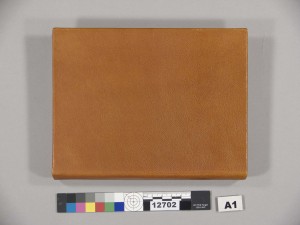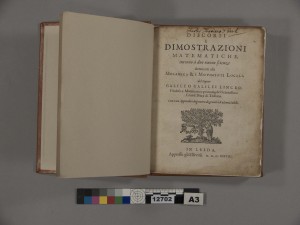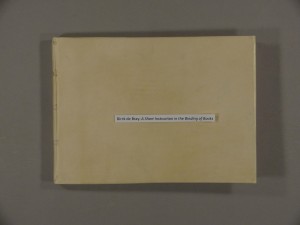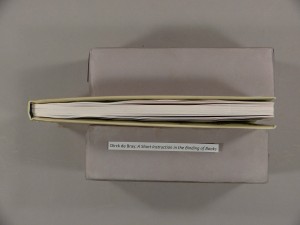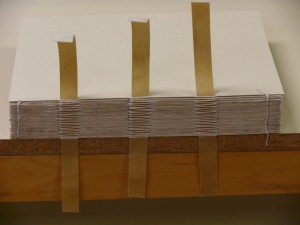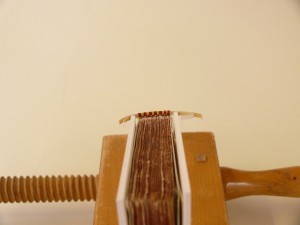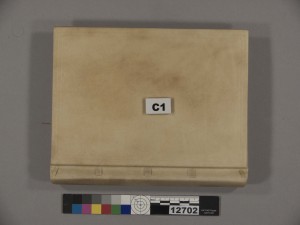by Michele Brown
Galileo’s final book, Discorsi e dimostrazioni matematiche, intorno à due nuoue scienze (Discourses and Mathematical Demonstrations Relating to Two New Sciences), was written during his period of house arrest, smuggled to Leiden and printed in 1638.
Like Cornell’s copy of Newton’s Principia (see our earlier blog post), Cornell’s copy of Galileo’s Discorsi had been bound in orange morocco. Unfortunately, there is no record of the original binding. The pages had been over sewn, which inhibited opening. The paper was brittle and acidic (pH was 4.7-5) with minor staining. The title page had been backed with Japanese tissue.
Since this volume is used extensively for teaching, the curator requested a new, more appropriate binding. We decided that this would be a good time to wash and resew the text to improve the opening and flexibility of the pages. The backing on the title page was removed at this time as the title page was in good condition with just a few tears on the fore-edge.
A full vellum binding seemed appropriate for the date and place of publication of this work.
Last year, I bought a translation of Dirck de Bray: Kort onderwijs van het boeckenbinden (Dirck de Bray: a short instruction in the binding of books), a Dutch bookbinding manual first published in 1658. This new edition was translated by Harry Lake, edited by Koert van der Horst and Clemens de Wolfe, and published by Rob Koch. This manual inspired the rebinding of the Discorsi.
I decided to first try the techniques described in the manual on my own copy. I used a piece of the parchment skin I made at a Pergamena parchment workshop in 2009.
I discovered that it can be difficult to bind a book at the same time you are trying to study it. The result was ok, but the boards are somewhat thin and tend to warp. We needed something more substantial.
I decided to follow the directions for endbands and lacing-in described in the de Bray manual, but I turned to the vellum on boards binding described by Peter Verheyen because that binding style promised greater board stability. This construction features a German-style split board, which differs from the English split board familiar to many of us. The German split board consists of a piece of card tipped to the outside of the board. The covering material is stuck to the card and at the turn-ins, essentially drummed onto the board. If the vellum contracts during periods of low humidity, it will pull the card, not the board.
The book was sewn two-on using vellum strips. As recommend by de Bray, the strips were cut in half width-wise and pointed before lacing in.
The endbands were woven from red and yellow silk twist over vellum strips per de Bray.
Then, I followed Peter Verheyen’s directions, this time using cream calf parchment from Pergamena Parchment.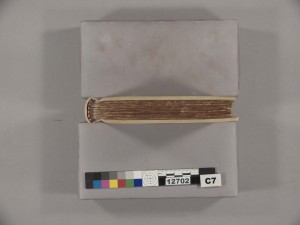
The new vellum binding is stronger and more attractive than the previous binding, the pages are more flexible. It is now more usable as a teaching tool.
